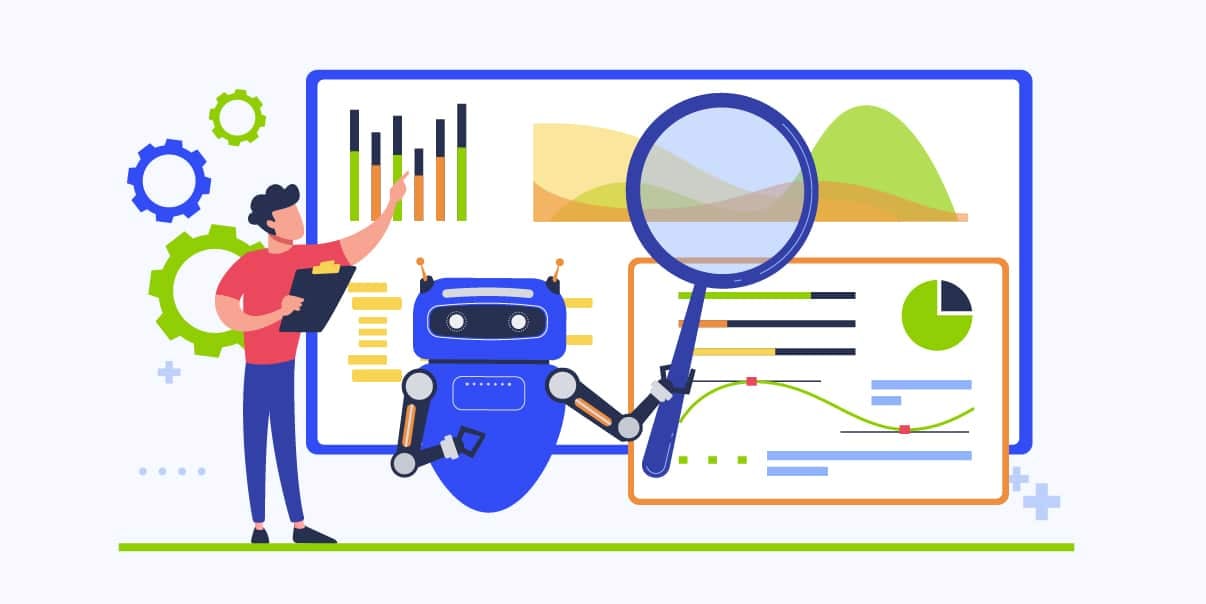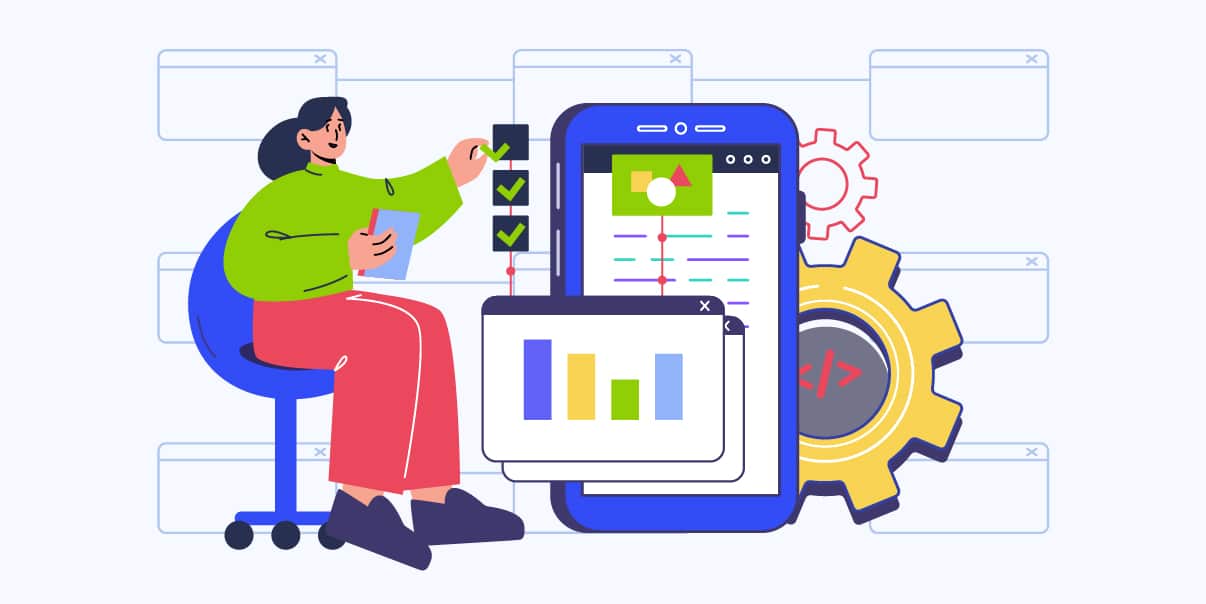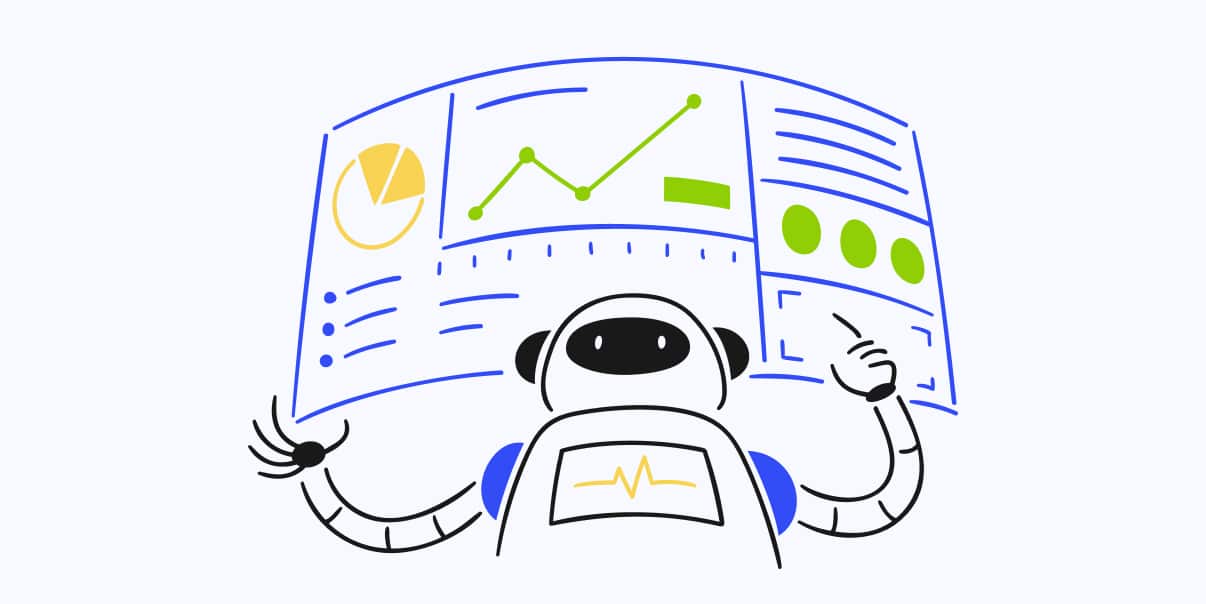Manual vs. Automation Testing
5 Critical Differences to Know

Today, software products are everywhere, and many of them fail. Ensuring a product’s performance, reliability, and overall quality is paramount for its success, especially in today’s highly competitive technology-driven markets. As an entrepreneur, it’s essential to comprehend different testing methodologies and practices to optimize product quality and customer satisfaction.
This article will compare manual and automated testing, focusing on five critical aspects: time and speed, cost and ROI, accuracy and reliability, scalability and adaptability, and skill requirements. By the end, you’ll be equipped to choose the right software testing method for your business.
Understanding Manual and Automation Testing
To compare manual vs. automation testing, we must first understand what each method entails.
Manual Testing
Manual testing is a process where testers manually execute test cases without the assistance of any automation tools. They perform actions as if they were the end-user, checking all features for correct operation.
Manual testing is particularly effective for exploratory, usability, and ad-hoc testing. However, it can be time-consuming and is susceptible to human errors. It’s most beneficial when the software is in its initial development stage or when you need to understand the user’s perspective.
Automation Testing
Automation testing (or automation testing), on the other hand, involves using software tools to execute predefined test cases. It’s often used for regression testing, load testing, and repetitive tasks.
Automated testing speeds up the testing process and increases accuracy. However, using an automation tool requires technical skills, and you need upfront time to create test scripts. Automation testing is most beneficial for large projects with frequent updates and when you need to test the same features repeatedly.
The upcoming sections will explore these differences in detail, starting with time and speed.
Critical Difference 1: Time and Speed
Effective software testing needs a careful balance between thoroughness and efficiency. In this section, we’ll discuss the difference in time between manual vs. automation testing.
Time Comparison
Manual testing involves humans performing tests case-by-case, which can be laborious and time-consuming, especially for extensive systems. For example, if a tester spends an average of five minutes on each test case, it would take over 83 hours to complete 1000 cases – a timeframe that doesn’t consider breaks or other distractions.
In contrast, automated testing can execute predefined test scripts in minutes. It also significantly improves test coverage, executing numerous test scripts across various scenarios and conditions. Once set up, the system can run thousands of tests outside business hours, contributing to continuous testing and integration strategies. It’s worth noting that test script setup and maintenance can add significant time to the overall testing process, particularly for complex systems.
Testing Impact: Manual vs Automated Strategies
The time differences between manual and automation testing can significantly impact businesses of all sizes. A time-intensive manual testing process might mean longer development cycles for startups and small businesses, potentially delaying product launches. In contrast, automation can facilitate faster releases, which is crucial for staying competitive in dynamic markets.
For instance, Google employs manual testing to uncover defects in its search engine. This strategy ensures a high-quality user experience but requires substantial human resources and time. It’s a feasible approach for a tech giant like Google, but there might be better choices for smaller companies with tighter resources.
On the other hand, Amazon leverages automation testing to find defects in its e-commerce platform. Automated testing allows Amazon to cover a variety of scenarios and conduct continuous testing, contributing to its agile development strategy. This approach could benefit startups or SMBs aiming to accelerate their development and testing processes, provided they can handle the initial setup and maintenance costs.
Microsoft showcases a hybrid approach, using manual and automation testing to find defects in its operating systems. The blend allows Microsoft to ensure user-friendly interfaces via manual testing and efficient bug identification through automated scripts. Microsoft’s strategy illustrates how a well-balanced combination of testing methods can yield optimal results, serving as a valuable model for enterprises of various sizes. However, this approach requires both considerable technical skills and time commitment.
Critical Difference 2: Cost and ROI
Return on Investment (ROI) is crucial in business. It shows how much money you make or lose from an investment compared to how much it initially costs. The initial cost and the benefits derived from the testing process determine the ROI for testing methodologies.
Cost Analysis
Manual testing, while having lower upfront costs, can become expensive over time due to its labor-intensive nature. This method requires a significant investment in human resources, and the costs can mount with the complexity and extent of the software undergoing testing.
In contrast, automation testing entails a higher initial expense due to the need for advanced tools and the skills to write and maintain test scripts. However, its ability to run tests repeatedly at high speed can significantly cut down costs in the long run, especially for large-scale and long-term projects. Even though creating automated test scripts comes with an upfront cost, they are also reusable.
ROI Discussion
While the initial cost of automation testing is higher, the ROI can be substantial due to its efficiency and speed. Automated testing is fast and efficient in regression testing, where automated tests can quickly and accurately validate whether changes in the code have not broken existing functionalities.
Scott Anderson, Senior Team Lead of Quality Assurance and Testing at Bank of America, states that a small team can execute two to five thousand scripts in less than a week with automation. This level of productivity and its reusability significantly enhance automation testing’s ROI in enterprises dealing with complex applications.
Financial Implications of Choosing Manual or Automated Testing for Businesses
The difference in cost between manual and automated testing can significantly impact businesses, depending on their size and testing requirements.
Manual testing might be a feasible initial option for startups and small businesses with limited testing requirements or budgets. It can be more affordable in the short term and is ideal for usability and exploratory testing that requires a human touch. It’s great for one-off projects, too.
In contrast, automation testing is the better choice if you know that you will need to do testing lots of times and have the resources for the initial investment. Larger enterprises or businesses with extensive software systems should also have automation testing as their first choice.
Automation testing mainly benefits companies like Bank of America that require extensive regression testing. Despite the initial investment in tools and resources, the time saved and the ability to perform testing at scale can yield a higher ROI, justifying the upfront cost.
Critical Difference 3: Accuracy and Reliability
Accuracy and reliability in software testing refer to the consistency and correctness of the test results. Accurate testing reveals the actual status of the software’s quality, while reliable testing consistently delivers the same results under the same conditions.
Because it relies on people, manual testing can give very accurate results for certain tests. However, it can also lead to inconsistencies due to human error and variation, potentially lowering the reliability of the results. Additionally, the potential for oversight grows with the complexity and size of the software, as humans may miss subtle defects or become fatigued over long testing sessions.
Automation testing, on the other hand, can provide a high level of reliability as it performs the same operation every time it runs, eliminating human error. However, it’s worth noting that automation testing is only as accurate as the test cases designed. Therefore, it requires careful setup to ensure accurate and reliable results.
Take the example of Cisco Systems. They leverage automation testing to validate the functionality of their complex networking solutions. Automation ensures consistent, reliable results across numerous test cases, ensuring high product reliability.
Business Impact: The Role of Accuracy and Reliability
If you work with software, your software product is at the center of your value proposition. Accuracy and reliability in testing are crucial to businesses that work with software.
Accurate and reliable test results ensure the quality of the product, leading to improved customer satisfaction and reduced maintenance costs. If the product fails to meet the customers’ expectations due to defects or errors, it could damage your company’s reputation, and you could lose your customers’ trust.
For businesses like online retailers, banks, or airlines, where software plays a crucial role in service delivery, any disruption can result in significant financial losses and impact customer loyalty. For startups, a faulty application could lead to loss of customers or reputational damage. In addition, a faulty app could result in massive financial losses for larger companies due to system downtime or remediation costs.
Critical Difference 4: Scalability and Adaptability
In software testing, scalability refers to the ability to handle an increasing workload effectively, while adaptability implies the flexibility to accommodate changes in software design or requirements. Both are significant factors when selecting a testing methodology.
How Each Testing Method Scales and Adapts
While manual testing is easily adaptable to changing software designs or requirements, scalability is a challenge in manual testing. As the test case number and complexity increase, the workload grows linearly, demanding more human resources and time, potentially leading to escalating costs and slower testing times.
Conversely, automation testing shines when it comes to scalability. Once set up, automation testing can effortlessly handle many test cases, achieving high coverage quickly. Its ability to re-run test scripts across different software versions or environments is a substantial advantage for extensive projects.
However, adaptability can be challenging with automation testing. Adjustments to the software may necessitate modifications to the test scripts, requiring additional time and resources.
Business Impact: The Role of Scalability and Adaptability
Scalability and adaptability are crucial to businesses of all sizes. For startups and small businesses with rapid growth expectations, a scalable testing methodology ensures they can maintain software quality as their product expands and evolves. On the other hand, adaptability is vital for businesses operating in dynamic environments where software requirements can change rapidly.
A business may need to prioritize scalability if it anticipates substantial growth or complexity in its software products. Conversely, a company might prioritize adaptability if it operates in an environment with changing requirements or where the software undergoes frequent revisions.
For instance, with its vast and constantly growing customer base, Netflix relies heavily on automated testing for scalability. As they frequently add new features and services to their platform, the ability to run thousands of test cases at scale, with high speed and accuracy, becomes indispensable to maintaining the platform’s performance and reliability. At the same time, manual testing allows them to adapt quickly to changing user experience requirements and validate the usability of new features. This balanced approach to scalability and adaptability emphasizes the benefits of both testing methodologies.
Critical Difference 5: Skill Requirements
The skills required vary between manual and automated testing, affecting the type of professionals businesses need to hire or train for their testing processes.
Manual Testing Skills
Manual testers often take part in each development phase, so they must understand the Software Development Life Cycle (SDLC) well. They should also be adept at designing and executing test cases to identify software bugs and tracking these errors effectively.
Strong communication skills are critical for manual testers, who must convey issues to the development team. Finally, attention to detail is crucial; an excellent manual tester should be able to spot minor discrepancies that could lead to significant software issues.
Automation Testing Skills
Automation testers need a different skill set. Programming knowledge, especially in scripting languages like Python, Java, or JavaScript, is essential as writing scripts for test cases is a core part of their job. They should also understand automation testing tools, as they must leverage them to build and execute automated tests.
Familiarity with Continuous Integration/Continuous Delivery (CI/CD) processes is another vital skill for automation testers, as many modern software development practices incorporate automated testing into these processes. Debugging and problem-solving skills are also necessary, as automation testers often have to troubleshoot scripts that don’t work as expected. Lastly, they should be familiar with various software development and testing frameworks to ensure their tests align with the overall development process.
Expertise Impact: How Manual and Automated Testing Skills Affect Business Operations
The skill requirements for manual and automated testing can significantly impact businesses. Starting with manual tests might be more practical for startups or small companies due to lower skill requirements and more manageable hiring or training costs. However, as a business grows and its software gains more features, its need for automated testing may become more pressing.
On the other hand, for larger organizations or those developing complex software, they might find that the investment in automation skills is worthwhile right from the start. For these businesses, the efficiency and scalability of automated testing can offset the initial investment in training or hiring skilled automation testers.
Regardless of your business’s size and needs, a balanced team with a combination of manual and automation testing skills can be a beneficial strategy. This approach ensures flexibility and coverage across different testing scenarios, enhancing the overall quality of the software product.
Conclusion
After comparing manual testing vs. automation testing, we have seen their unique strengths and shortcomings. The former excels in exploratory and usability testing, while the latter shines in regression and performance testing.
One of the two options may be the better choice depending on your company’s specific needs, skill sets, resources, and software complexity. But ultimately, automation testing cannot and should not entirely replace manual testing — blending both approaches creates a comprehensive, effective testing strategy.
Choosing a suitable testing method is vital to your business’ success, and we’re here to help. At BIT Studios, we can offer expert advice on testing and custom software. Reach out to us today, and let’s upgrade your software’s quality and reliability.
We’re BIT Studios!
At BIT Studios we specialize in designing, building, shipping, and scaling beautiful, usable products with blazing-fast efficiency



